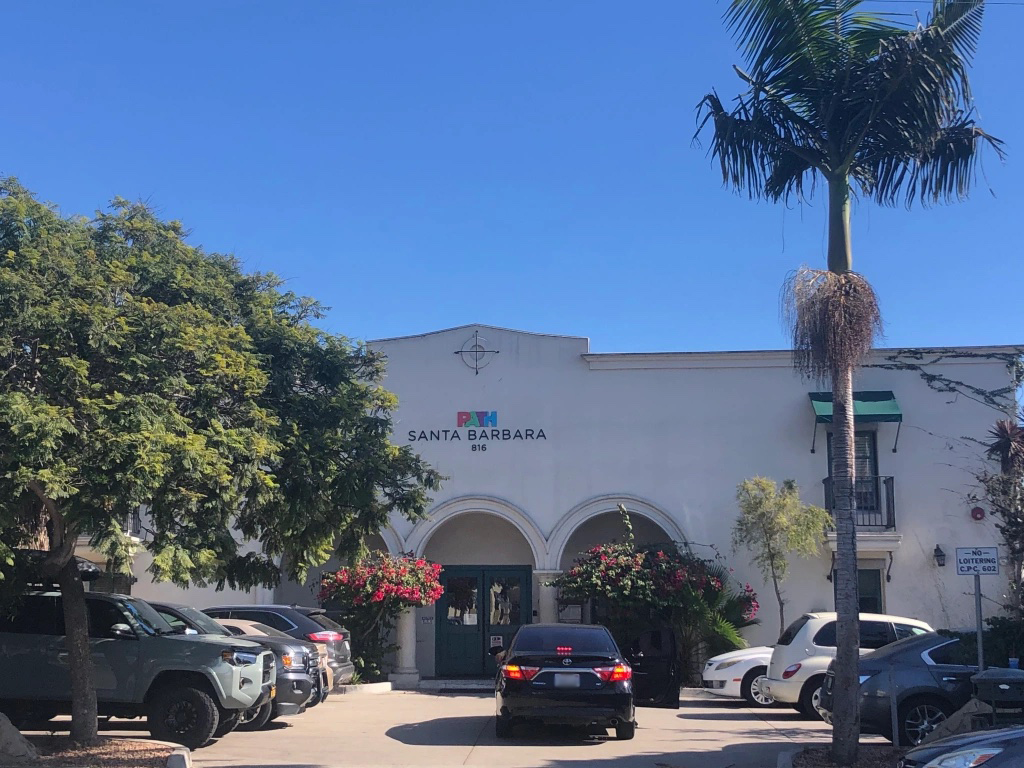Needs Expand at PATH Shelter in Santa Barbara
Programs, Renovations, and Staff Improvements with Increased Funding for PATH

Despite concerns voiced by councilmembers, the homeless shelter run by People Assisting the Homeless (PATH) received funding from the Santa Barbara City Council recently. The funding was welcome, Director of Programs Shannon Brunner indicated during a visit to PATH in October, as the shelter serves a population with more intensive needs and also needs to retain staff.
PATH currently operates at 85 percent capacity, with up to 85 people per night, a number that varies daily. The city asked for seven beds to be held for people brought to PATH by law enforcement or City Net, and beds in the shelter supply a variety of needs: 20 beds with Cottage Hospital, 22 beds with County Behavioral Wellness, some for the City of Goleta, and pre-trial probation beds. Some other beds work in partnership with homeless service providers like SB ACT and others. The layout at PATH includes a dining room, a kitchen, a locker room for storage, and a computer room.
With the help of the continued funding, renovations at PATH for the women’s bathroom, new fire panels, and security cameras can proceed, as well as improved wages for employees.
“Without the funding, we’re competing with fast food services with fees. We have to be able to offer [employees] competitive wages to give the people the intensive care they need,” Brunner said. At PATH, wages typically range from $17 to $22 an hour. The new wages have not been clarified, but according to PATH, they hope “funding can be competitive with local county and health-care jobs that are often performing the same work.”
PATH is run by several permanent, full-time onsite team members, including Brunner. They are currently in the process of hiring a Regional Director to oversee all staff and operations.
Over the past year, 11 percent of the people who came through PATH’s interim housing program moved into permanent housing, a number PATH recognized “is low” and can be improved “with more case managers.”
On October 11, 2022, the Santa Barbara City Council decided to continue funding PATH with just over $200,000. Councilmember Mike Jordan, as well as two public commentators, voiced concerns about PATH’s effectiveness and accountability as an organization that receives public funding.
In response, PATH’s Chief Regional Director, Jonathan Castillo, emphasized PATH’s past conduct.
“People forget that PATH has been meeting the expectations of the conditional use permit all along,” he said. Castillo highlighted monthly cleanups, neighborhood patrol, and outreach, as well as an outreach specialist PATH recently hired to reach out to people not engaged with PATH’s services.
“We will also be engaging with community stakeholders, with businesses, with neighborhood patrol … It’s gonna create more trust and transparency within the community,” Castillo said.
He went over how the funds, which have been used as general operating funds since 2015, will move toward “right-sizing” the program. This comes after PATH moved “from a high barrier to a low barrier model,” he explained.
“When we made the shift in 2018, 18 percent of the folks we were serving were chronically homeless, and since we’ve shifted toward that model, 64 percent of them are. People who historically had major challenges are now coming in, with more chronic medical and mental needs … The city’s funding is gonna help us make sure we have a reasonable amount of beds and expectations in terms of services,” Castillo said.
Later, Brunner emphasized the role funding would play in continuing PATH’s services.
“We need other funders to get in line with the city so that we can provide the intensive case management individuals need to find housing,” she said.



